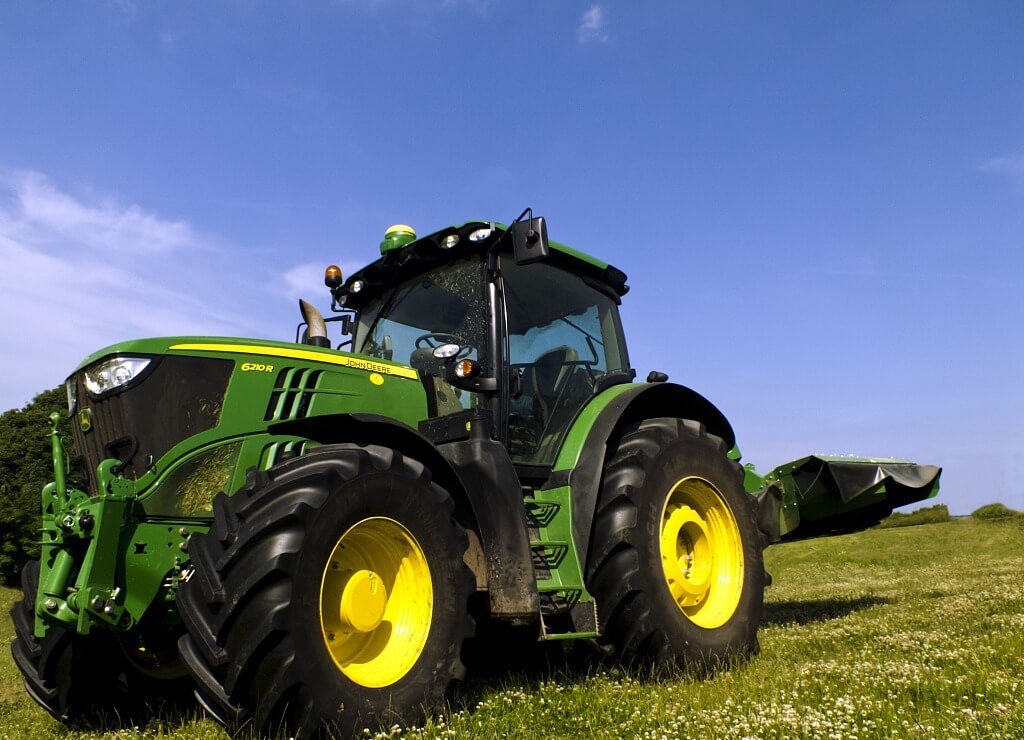Farm tractors are the backbone of modern agriculture, revolutionizing how we cultivate land, plant crops, and harvest produce. But when did these powerful machines first make their debut, and how have they evolved over time?
Farm tractors first came into play in the late 19th century with the development of steam-powered models. The introduction of gasoline-powered tractors in the early 20th century marked a significant turning point in farming, boosting productivity and transforming agricultural practices worldwide.
This article takes you on a journey through the history of farm tractors, from their earliest iterations to the advanced machines we see in fields today.
Contents
- 1 Tractor Historical Background
- 2 Early Developments in Tractor Technology
- 3 What Was the First Tractor Brand?
- 4 The Rise of Farm Tractors
- 5 Technological Advancements
- 6 Tractors in Different Regions
- 7 Structure of a Tractor
- 8 Impact on Agriculture and Society
- 9 Future Trends and Innovations
- 10 Conclusion
- 11 FAQs
Tractor Historical Background
Before the advent of tractors, farming was labor-intensive and heavily reliant on human and animal power. Farmers used horses, oxen, and manual tools to plow fields, which limited the size of farms and the amount of land that could be cultivated. As the demand for agricultural products grew in the late 1800s, there was a clear need for more efficient farming methods.
The Industrial Revolution played a crucial role in meeting this demand by introducing mechanization. Early attempts at mechanizing farming included steam engines used to power stationary machines like threshers. However, these machines were cumbersome and not yet capable of moving through fields to perform tasks like plowing or planting.
Early Developments in Tractor Technology
The late 19th century saw the first significant advancements in tractor technology with the introduction of steam-powered tractors. The first steam-powered tractor was developed by John Fowler in 1858, primarily for plowing. However, these early tractors were bulky, difficult to maneuver, and required a significant amount of fuel and water, making them impractical for widespread use.
The transition from steam to internal combustion engines in the late 1800s marked a pivotal moment in tractor development. Charles Hart and Charles Parr, two American engineers, were among the first to develop a successful gasoline-powered tractor in 1901. This tractor was more compact, easier to operate, and more efficient than its steam-powered predecessors.
What Was the First Tractor Brand?
The term “tractor” itself was first coined by Hart-Parr Company, founded by Charles Hart and Charles Parr, in 1903. Hart-Parr is recognized as the first tractor brand and played a key role in popularizing gasoline-powered tractors in farming. Many people credit the Hart-Parr Model 3, introduced in 1906, as the world’s first commercially successful tractor.
Hart-Parr’s innovations didn’t stop there. They continued to refine their designs, focusing on durability and ease of use, which helped farmers increase productivity and reduce labor costs. This success paved the way for other companies to enter the market, leading to rapid advancements in tractor technology throughout the early 20th century.

The Rise of Farm Tractors
The introduction of gasoline-powered tractors marked the beginning of a new era in agriculture. By the 1920s, tractors were becoming more common on farms across the United States and Europe, this time the tractor can replace horses. According to historical records, over 200,000 tractors were in use in the U.S. by 1925, a dramatic increase from just a few thousand at the beginning of the decade.
Tractors allowed farmers to cultivate larger areas of land more efficiently than ever before. A single tractor could replace several teams of horses, significantly reducing the time and labor required to plow fields, plant seeds, and harvest crops. This increased efficiency not only boosted farm productivity but also helped drive down the cost of agricultural products, making food more affordable for consumers.
Technological Advancements
The 20th century saw numerous technological advancements that significantly improved tractor performance and functionality. In the 1940s, diesel engines became the standard in tractors, offering greater fuel efficiency and power compared to gasoline engines. The introduction of power take-off (PTO) systems allowed tractors to power additional equipment, further enhancing their versatility.
By the late 20th century, tractors had become highly sophisticated machines equipped with GPS technology, automation, and precision farming capabilities. These innovations have allowed farmers to optimize planting and harvesting, reduce waste, and increase crop yields, all while minimizing environmental impact.
Tractors in Different Regions
While tractors were initially developed and adopted in the United States and Europe, their use quickly spread to other parts of the world. Today, tractors are a common sight on farms in nearly every country, from the vast wheat fields of Canada to the rice paddies of Asia. Each region has adapted tractor technology to suit its specific agricultural needs and conditions, leading to a diverse range of tractor types and models.
Structure of a Tractor
Modern tractors are complex machines made up of several key components that work together to perform various tasks on the farm. The main parts of a tractor include the engine, transmission, chassis, drivetrain, hydraulic system, and operator’s cab.
- Engine: The heart of any tractor, providing the power needed to perform tasks. Most modern tractors use diesel engines, known for their durability and fuel efficiency.
- Transmission: This system transfers power from the engine to the wheels, allowing the tractor to move and perform tasks like plowing or hauling.
- Chassis: The framework that supports the tractor’s body and components, providing stability and structural integrity.
- Drivetrain: A system of gears and shafts that transmit power from the engine to the tractor’s wheels or tracks, enabling movement.
- Hydraulic System: Essential for operating attachments like plows, loaders, and backhoes. Hydraulics use pressurized fluid to create mechanical force, allowing for precise control of implements.
- Operator’s Cab: The control center of the tractor, where the operator sits and manages the machine. Modern cabs are designed for comfort and safety, often featuring climate control, ergonomic seating, and advanced control panels.

Impact on Agriculture and Society
The widespread adoption of tractors has had a profound impact on agriculture and society as a whole. By mechanizing labor-intensive tasks, tractors have allowed farmers to cultivate larger areas of land, increase production, and reduce costs. This has led to a more efficient and productive agricultural sector, capable of feeding a growing global population.
However, the rise of tractors has also brought about significant social and environmental changes. The reduction in manual labor has led to a decline in the number of farmworkers, impacting rural communities and economies. Additionally, the increased use of machinery has raised concerns about soil compaction, erosion, and the environmental impact of fuel consumption and emissions.
Future Trends and Innovations
Looking ahead, the future of farm tractors is likely to be shaped by emerging technologies and changing agricultural practices. Electric tractors, autonomous vehicles, and AI-driven farming solutions are just a few of the innovations on the horizon. These technologies have the potential to further increase efficiency, reduce environmental impact, and revolutionize how we think about farming.
Conclusion
Farm tractors have come a long way since their humble beginnings in the late 19th century. From steam-powered behemoths to modern, GPS-guided machines, tractors have continually evolved to meet the needs of farmers around the world. As we look to the future, it’s clear that tractors will continue to play a crucial role in feeding our growing global population and advancing agricultural practices.
FAQs
Tractors are essential in farming because they significantly reduce the amount of labor required to perform tasks like plowing, planting, and harvesting. They also increase farm productivity, reduce costs, and enable farmers to manage larger areas of land more efficiently.
Future trends in tractor technology include the development of electric tractors, autonomous vehicles, and AI-driven farming solutions. These innovations aim to increase efficiency, reduce environmental impact, and further revolutionize agricultural practices.

